For most photographers, especially those who shoot landscapes, it is crucial to have a good set of filters at your disposal. Filters come in two types: screw-on filters (attaching directly to your filter threads) and square filter systems (sliding into a holder on the end of your lens). A lot of landscape photographers move to a square filter system over time — they have a wider selection of filters, and they let you move your filters from lens to lens more quickly. The main companies that make square filter systems are Lee, Cokin and HiTech, all of which are well-known among landscape photographers. There are a few other companies in the marketplace, too, including a relatively new brand called NiSi. Recently, NiSi has been contacting photography websites for reviews, and they contacted us as well. I have used the Lee system for a while, and experienced a few problems with it, so I wanted to review these NiSi filters and see how they stack up. This review covers the NiSi filter system, along with a few specific filters.

1) About This Review
For this review, NiSi sent us two sets of filters. I took one, and Spencer took the other. We each reviewed the filter set separately and combined our thoughts (which were fairly similar) into this review. We have been allowed to keep these filters. That is always a problem with online reviews — smaller companies sometimes send out freebies to websites, and you have to take bloggers at their word that the review is honest and legitimate. That is especially true in a review like ours, which is mostly positive.
Our opinions here are entirely our own, and we only accepted the filters under the condition that we can write whatever we want about them. These NiSi filters are good, but they aren’t perfect, as this review makes clear. Here, we’re reviewing the entire NiSi system. This includes the filter holder and adapter rings, as well as the filters themselves (a polarizer, an ND grad, and a ten-stop ND filter). We go through all the pros and cons below.
2) Build Quality
The first thing you’ll notice about NiSi filter system is its build quality. As a whole, it feels fairly well-built and solid. In particular, the graduated ND filter is made of glass, and it feels very high in quality. Standard Lee’s and HiTech’s versions are made of resin, which scratches much more easily, although you can get glass filters from each company at a much higher cost.
The rest of the NiSi kit is made of aluminum. This is pretty good, but not perfect. First, NiSi’s aluminum is very thin, which makes it feel a bit cheap (Lee’s filter holder, however, is made of plastic — NiSi wins in this case either way). Also, although the aluminum has worked well so far, I would prefer brass filter threads instead. Aluminum threads don’t do as well in cold weather, and they are more prone to getting stuck on the lens. Plus, they have the tendency to wear out faster overtime (which we have not yet been able to test, but will definitely update the review in the future if it turns out to be true).
Finally, the leather carrying case for the filters is quite nice. It holds up to six rectangular filters (4×6 or 4×4), and it’s relatively small. If you use square filters, NiSi even provides plastic blank spacers for those, so that you do not have to turn the case over in order to get a hold of a shorter square filter, which is nice.
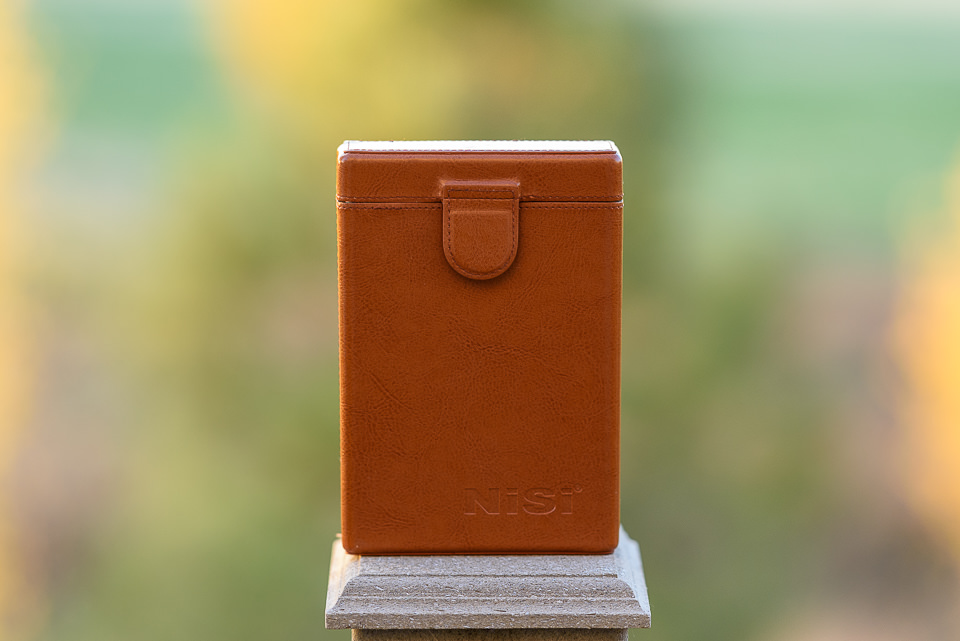
However, there is one potential problem with the filter case – while it is nice to be able to carry up to six filters, I would not recommend putting more than 4-5 in there. Partially because the case does not close as well anymore and partially because it has a tendency to bend and potentially scratch the first filter. Unfortunately, it seems like there is simply not enough reinforcement on the front of the case, which can result in its bending, as seen below:
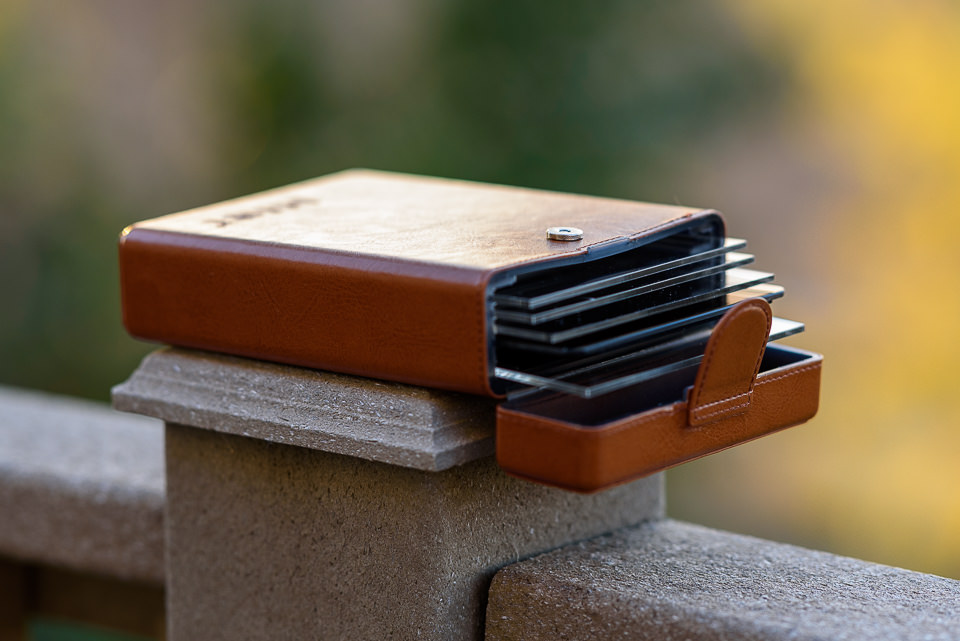
The front of the case has a tendency to bend, which can potentially damage the first filter.
My case developed this behavior after several trips, although Spencer’s sample seems to be a bit better for now. If additional pressure is applied to the bent side, it can certainly break the first filter. And even if it does not, the magnetic button on the front has two mounting brackets on its back, which can certainly scratch even a glass filter. I wish NiSi reworked the case and found a way to provide additional protection and eliminate anything inside the case that might scratch filters overtime.
Overall, aside from the above-mentioned issue, the build quality of the NiSi equipment is quite good. As a whole, it is noticeably better than Lee’s, although not worth making the switch in and of itself.
3) Assembly
When you first try to set up your NiSi filter system, it can seem a bit counter-intuitive. That’s because there are a few important differences between NiSi and Lee filters. Assembling the filter system takes four steps:
3.1) Step-Up Ring
Unless you have a lens with an 82mm filter thread, you need a step-up ring to 82mm, as that’s the native size of the filter holder. The full NiSi system comes with three step-up rings: 67mm to 82mm, 72mm to 82mm and 77mm to 82mm. If any of your lenses has a different filter thread size, you’ll need to buy your own step-up ring to 82mm. The step up rings, along with the NiSi filter holder can be all stored in a larger leather case, as seen below:
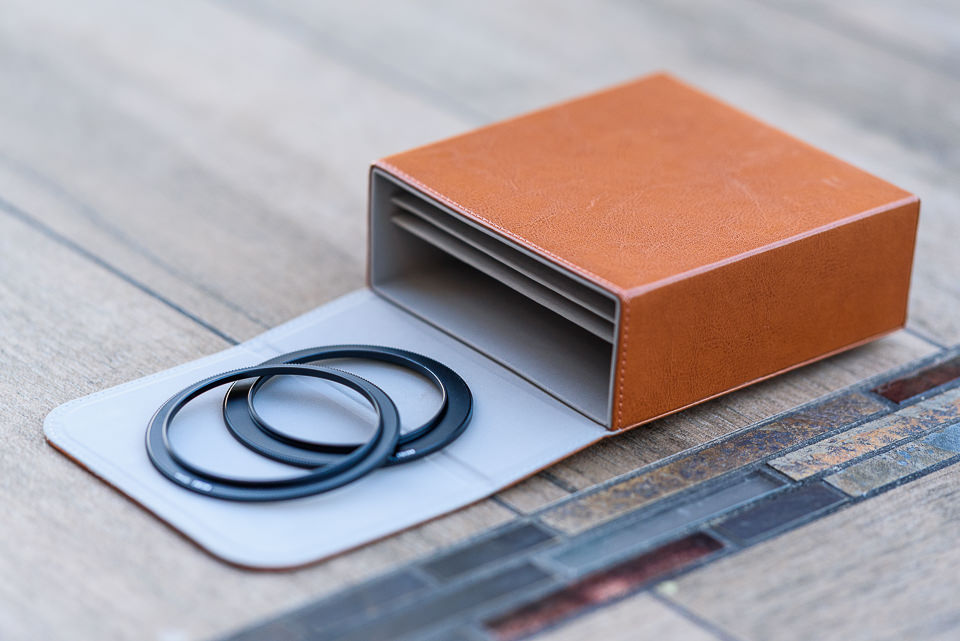
3.2) Adapter Ring
Once you’ve attached the 82mm step-up ring, you can screw the “82mm adapter ring” onto your filter threads. The name “adapter ring” can be confusing, because there are a lot of rings involved in setting up a filter system. This adapter ring isn’t actually the piece that holds your square filters — this is what the square filter holder clamps onto.
There is one difference so far between NiSi filters and Lee filters. For Lee filters, the adapter ring (again, what the square filter holder clamps onto) doesn’t have a built-in 82mm filter thread – it comes in all sizes. You need to buy a separate adapter ring for each one of your lenses. My three main lenses, for example, each have their own filter thread sizes: 58mm, 67mm, and 77mm. So, I need three adapter rings as well — one for each size.
As explained above, NiSi is different. Instead of needing three adapter rings, I need three 82mm step-up filter threads, and only one adapter ring. I prefer the Lee system’s simplicity, but there is a good reason why NiSi does it this way: it allows for a built-in polarizing filter!
3.3) Polarizing Filter
This is the interesting part. Because of its design, NiSi’s adapter ring has a built-in way to attach a slim polarizing filter. This fixes one off the main problems with the Lee system — easy use of polarizers. With Lee, there are three ways to use a polarizer:
- Attach a polarizing filter onto your lens, then attach the adapter ring directly onto the polarizing filter. This is a bad option, because it creates a lot of vignetting on wide-angle lenses. It also makes the polarizer almost impossible to remove from your lens — any time you try to spin it off, you end up just rotating the whole system instead. I tried this for a while, and it was a nightmare.
- Instead, you can use Lee’s “105mm adapter” to attach a huge, round polarizing filter onto the very end of the filter system. In theory, this works well. However, it makes your filter system much larger, and it also can cause vignetting. Now that my widest lens is a 20mm rather than a 24mm, the vignetting is too strong, and this option no longer works (yes, I still use a polarizer on my 20mm lens – mostly for forests and waterfalls rather than blue skies, which turn uneven in brightness when you use a polarizer on a wide-angle lens).
- Finally, you can use a square polarizing filter that slides into your Lee holder exactly like any other square or rectangular filter. There are two problems with this approach, although this is what I have been using with my own Lee system. First, it takes up one of the slots in your filter holder – not ideal when you need to stack several filters. Second, and more importantly, you no longer have the ability to turn the polarizer at any angle you want. Instead, you have to rotate the entire filter holder at once. This is a huge problem when you’re using a polarizer and an ND grad at the same time (you may want them rotated in different directions, which is impossible).
The NiSi system fixes these concerns, although it adds a small problem of its own.
So, how does the NiSi system work? Interestingly enough, there is a small wheel on top of Nisi’s “adapter ring” that actually lets you spin the polarizing filter! I am a big fan of this design. It lets you rotate the polarizer at any angle, and it takes up less space than any of the Lee options:
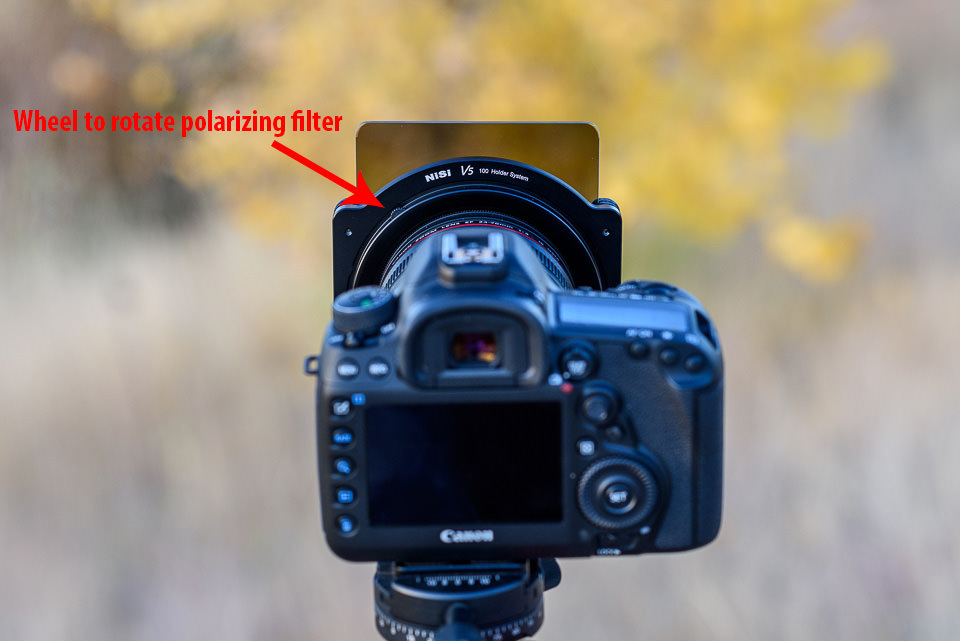
The one problem is that this polarizer adds another ring that you have to screw in. The polarizer saves space, but it makes things a bit more complicated. If you haven’t used the NiSi system for very long, it can be difficult to remember how to assemble and reassemble it. The Lee system might be simpler and more intuitive to assemble in comparison, especially for a first time user.
Still, on balance, this is an improvement. If you’re looking for a reason to switch from Lee to NiSi filters, this is it – the polarizer simply has a better design.
3.4) Filter Holder
Last is the filter holder itself. There isn’t much to explain here, as it is pretty much exactly like the Lee system. The filter holder has a small knob on the side, which you pull out as you’re placing the filter holder onto the adapter ring. Let go of the knob, and your filter holder stays in place.
4) Ease of Use
This is a double-edged sword. On one hand, as explained above, the polarizer is incredibly easy to use. The small wheel at the top of the adapter ring is a great design. I wish that all polarizers spun like this. However, the sheer number of rings in this system means that everything feels more convoluted than the Lee version. It isn’t any larger – in fact, it saves a bit of space and weight. It’s just more to keep track of in our opinion. Also, it takes a bit more time to swap your filter holder from lens to lens. With the Lee system, you just need to unclamp and clamp the filter holder; here, you need to unscrew and then screw in the adapter ring. Confusing? It’s a bit easier in practice, but still not as simple as the Lee system.
Lastly, NiSi’s filter holder itself doesn’t clamp as easily as the Lee system. What do I mean by that? If you’re trying to use any rectangular filters, it can take a moment before you get the square filter holder to attach properly to the adapter ring. I don’t know why this is the case — Lee’s is easier and quicker to use. However, this isn’t a major problem, just a minor annoyance.
In the end, Lee wins out in simplicity, but NiSi is still very usable. A few minor tweaks would even out the differences.
5) Optical Tests
As we have shown in our glass vs resin filters article, high-quality glass filters definitely outperform their resin counterparts. We have tested NiSi’s glass filters and they turned out to be superior to both Lee’s and HiTech’s resin filters. Let’s take a look at some of the comparisons between different filter types.
5.1) Two Stop (0.6) GND Filter Comparison
Here is a comparison of MTF results produced by Imatest, comparing the different types of 0.6 GND filters from NiSi, Lee and HiTech:
As you can see, NiSi filters practically do not cause losses in sharpness, whereas both Lee’s and HiTech’s resin filters showed up to 17.5% image degradation. Such optical performance might not be easy to spot on low resolution cameras, but once used on high-resolution cameras such as the Nikon D810 and Sony A7R II, the differences can become quite obvious.
At Photo Plus New York, NiSi showcased its glass filters and compared them to filters from Lee and Hitech. Their setup showed the performance of a NiSi glass filter using a special device, as seen in our interview below:
Obviously, the test was exaggerated quite a bit to make NiSi look good, but still, it made us want to check if their claims were actually true. After testing NiSi filters, we came to conclusion that their glass filters are indeed superior to most popular resin filters on the market. However, this also does not mean that NiSi has something to offer that Lee or HiTech do not – both companies actually offer their versions of glass filters, although at a higher price premium. HiTech’s 0.6 GND Firecrest filters are made from 4mm thick Schott glass, which is basically as good as a filter can get. At $350, however, it is over 2x more expensive, making such filters cost-prohibitive for many photographers out there.
5.2) 10 Stop ND Filter Comparison
For our next test, we compared two 10 Stop ND filters from NiSi and HiTech. If you have experience shooting very long exposures, you probably know how images can get hurt with most resin filters, since they introduce quite a bit of color cast. Pretty much every resin filter that I have personally tested from Cokin, Lee and HiTech has always had color cast issues – some are on pinkish side, while others add a lot of green and blue color casts to images. How does the NiSi 10 stop ND filter compare in such cases? Let’s take a look at the following two images:
The image on the left is produced by NiSi’s 10 stop ND filter, while the image on the right is produced by HiTech’s 10 stop ND filter. See the difference in color? That’s not white balance – that color change is purely the result of the resin filter! When I first saw this in the field when testing out HiTech filters, I was really shocked to see such blue-rich colors. In all honesty, I don’t understand why companies like HiTech even sell such crappy filters, because it is impossible to take care of extreme color casts in post-processing. Even if you move your temperature slider towards oranges, it is not just the blues that are affected – this filter adds a bunch of green and red colors as well. You pretty much get the whole color spectrum added to your images and it is pretty bad! Glass filters and specifically the NiSi 10 stop ND filter here, do not have such problems. As you can see, the colors appear natural and there is not even a hint of color cast in the image.
What about sharpness differences? Well, that’s where it is a double loss for resin filters. Just take a look at the below MTF comparison:
Yikes! You might be wondering what happened here. Well, resin happened. As you can see, even with a 10 stop ND filter, NiSi performs really well. There is a slight loss of sharpness in the center, but it is not something you would be able to see in images. Mid-frame and the corners are definitely impacted and that’s expected when a filter is cutting down so much light from entering into the lens. However, that’s nothing compared to what happens with a 10 stop ND resin filter – look how bad that HiTech filter does in comparison. That’s practically a 30% drop in sharpness. Not only does the HiTech filter add nasty color casts, it also does massive damage to image sharpness!
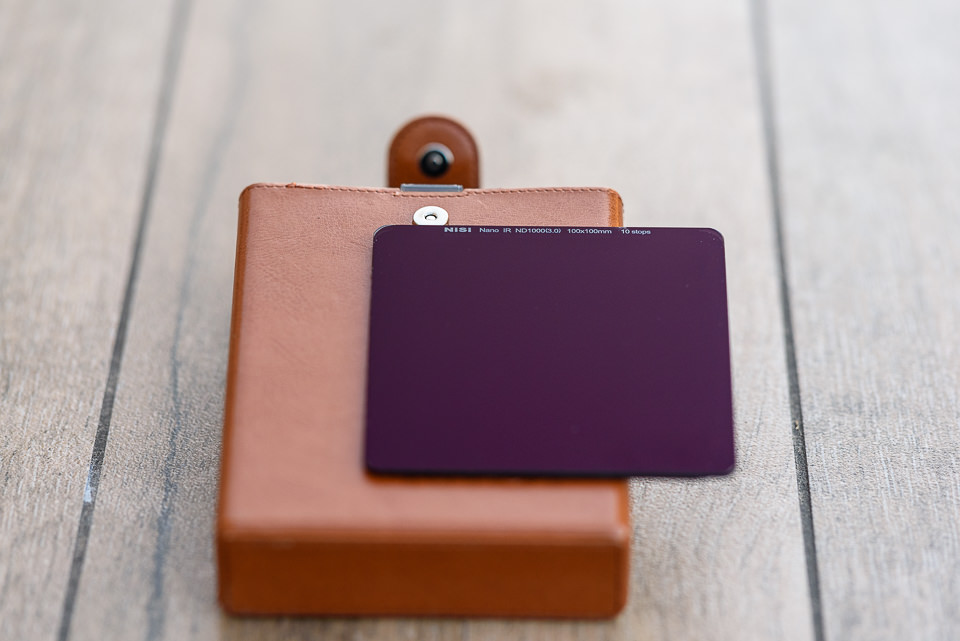
5.3) Polarizing Filter Comparison
Lastly, we wanted to see how good the provided glass polarizing filter is when compared to a high-end polarizing filter from B+W, specifically the B+W Kaesemann 82mm MRC Nano, which by itself costs around $135. After going back and forth to measure sharpness between these filters, we could not spot any noticeable differences in performance – the difference was less than 1-2%, which falls into margin of error. So the NiSi filter seems to be as good as the B+W filter in terms of not impacting image sharpness.
However, there are a few important points to add here. First of all, the B+W filter can be mounted independently on any lens with a 82mm filter thread, whereas the thin 82mm NiSi filter can only be used on the NiSi filter holder. Second, the B+W Kaesemann polarizer does not reduce as much light going into the lens – in our tests, we saw approximately 1 full stop of light loss. The NiSi polarizer, on the other hand, had much more light loss – approximately 1.3 to 1.5 stops of light loss in comparison. Third, the B+W filter has noticeably better coating, which does not add as much ghosting and flare to images as the NiSi filter. And lastly, the B+W filter is made from high quality metal and brass filter ring, whereas the NiSi polarizer feels quite cheap in comparison with its lightweight aluminum construction. In short, you definitely get what you pay for with B+W polarizers. But how useful are all these features if you cannot use them with filter holders? That’s where the NiSi polarizer comes in and for that, it does a pretty decent job!
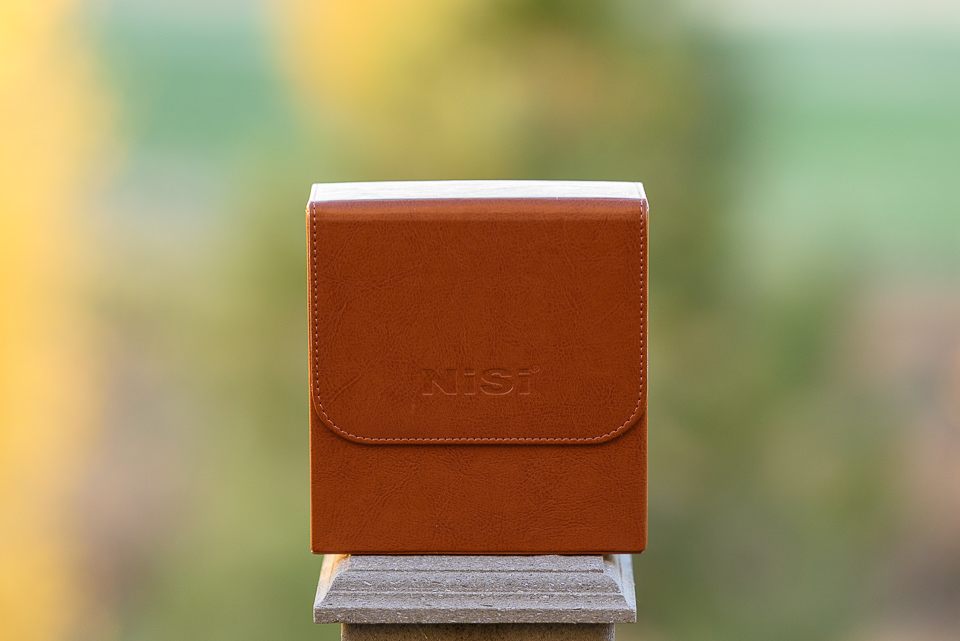
NiSi’s large carrying case for the filter holder and adapters
6) Filter Gradation
Our friend Simone Conti pointed out an interesting observation about NiSi filters that was worth looking into – he said that the gradation of the GND filters was a bit too long when compared to Lee filters. I decided to investigate this issue further and see what he meant, so after I got back from Photo Plus, I put both Lee’s and NiSi’s 0.6 GND filters side-by-side to see what he meant. Indeed, the gradation on the Lee filter appears to be much more sudden. Basically, the filter starts out transparent on the bottom, then the middle of the filter is where the filter softly switches from transparent to 2 stops darker. From just a little higher all the way to to the top, the filter stops about the same amount of light.
In comparison, NiSi’s gradation appears to be much more spread out – the filter starts transitioning in the center and gets progressively darker towards the top edge. There does not seem to be a set “boundary” or a threshold to this gradation in the middle of the filter like on the Lee filter, so it just gets its 2 stop darkness only towards the very top of the filter. This might not be a big deal for most photographers out there, but I would certainly prefer to see NiSi modify the filters, so that the transition happens in the middle of the filter, rather than gradually spread across half of the filter height. Why would this be a potential issue? Well, the NiSi filter simply makes it harder to see exactly where to stop the filter when looking through the viewfinder or composing via live view. The smoother / more spread out gradation can work out great for some environments where one perhaps desires to slowly transition from one area of the frame to another (which can be especially useful when photographing cityscapes with tall buildings and mountainscapes with high peaks), but considering that it is only a two stop filter, I do not think it would be that much of a concern in most situations. Personally, I prefer the gradation to occur in a smaller area in the center of the filter.
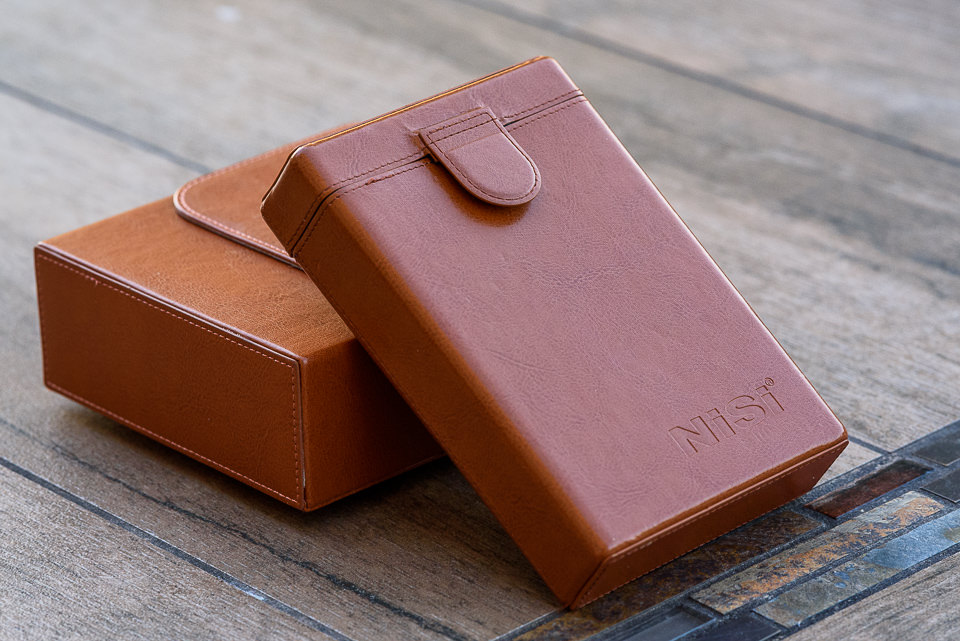
7) Other Concerns
A few other reviews online have mentioned that NiSi filter holder slides directly onto the lens (with foam to keep it in place) rather than screwing onto the filter threads. This is no longer the case. For all the versions currently sold, NiSi filters are like the Lee system – they attach via your filter threads. This seems like a much better option, and the old version was resulting in a lot of negative reviews. It seems that NiSi listened to their feedback and redesigned the system.
Also, a lot of people may be wondering if the NiSi system works for ultra-wide lenses without filter threads, like the Nikon 14-24mm f/2.8G. The short answer is yes, but anyone who uses these lenses knows how difficult it is to find a good filter set. Here, you need much larger filters (150mm rather than 100mm) and an entirely different filter holder system if you want it to work. We didn’t test that particular system, so we can’t provide our perspective at this time.
8) Verdict Against the Lee System
For some people, the NiSi system has some noticeable improvements over the Lee filter system. First, the build quality is better, which is certainly nice. Especially with the carrying case, the NiSi system feels a bit more complete. But, more importantly, the polarizing filter situation strongly favors NiSi. This is why both Spencer and I are sticking with the NiSi system from now on. There aren’t huge differences between the two, but NiSi just makes our lives a lot easier when we need to use a polarizer and a grad filter at the same time (which happens relatively often for our landscape work).
Here’s what we would say — if your polarizing situation with Lee is bothering you, it may be worth the switch. Otherwise, there is no reason to switch from Lee, because there really aren’t that many differences between the two holders. If you are just starting out, either is a good choice. We cannot conclusively recommend one over the other. The Lee system is simpler and quicker to use, but the NiSi system is better-made and handles a polarizing filter more elegantly.
Remember, too, that you can swap out the rectangular filters between these two systems without a problem. So, if you prefer, you can use a filter holder from one system and actual filters from another, which is great! Actually, given how well glass filters from NiSi perform compared to Lee, that might be an excellent choice for those who want to keep their Lee filter holders, but want to stay away from resin.
Ultimately, not taking price into account, both systems are very similar. If you need a square filter system, you can’t go wrong either way.

9) Price Comparison and Conclusion
Filter systems like this are sold as components, not as a whole set. Here are the links to each of the NiSi items mentioned in this review. NiSi is primarily sold through Amazon, although you can now find it at B&H Photo Video as well:
- NiSi filter system, $158 (Includes 67mm to 82mm, 72mm to 82mm, and 77mm to 82mm step-up filter threads. Also includes NiSi’s adapter ring, polarizing filter, and square filter holder).
- NiSi leather case, $35
- NiSi 10-stop ND filter, $118
- NiSi glass 3-stop soft graduated filter, $165
Is this cheaper or more expensive than Lee’s system? Ignoring the leather case, which I recommend regardless of the filter system you use, NiSi is noticeably less expensive than Lee. Here, are the total costs:
- Lee filter holder, $90
- Lee 100mm x 100mm polarizer, $220
- Lee 10-stop ND filter, $150
- Lee resin 3-stop soft graduated filter, $110
- Lee 77mm adapter ring, $35 (Note: the wide-angle version of this adapter ring, which has less vignetting, is $65)
Clearly, Lee is more expensive for a comparable filter lineup. Without the cost of the leather case, the NiSi system is $441. A comparable Lee system is $605 (or $635 if you have the wide-angle adapter ring) and it does not come with all the adapters that are included with NiSi. That’s a large difference for such similar products. Because of this, I am inclined to recommend that a beginner goes with the NiSi system instead of the Lee system. But, if you already have the Lee system and don’t have a problem with your polarizers, there’s no need to jump ship.
Hopefully, this helped you decide if the NiSi filter system is right for you. It isn’t perfect, but a lot of people will see benefits here that Lee doesn’t provide – and vice versa. It’s all up to your specific needs.
The post NiSi Filter System Review appeared first on Photography Life.
from Photography Life https://photographylife.com/reviews/nisi-filter-system
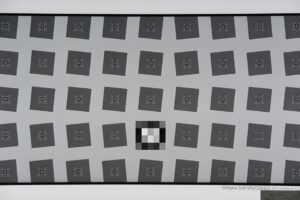

No comments:
Post a Comment